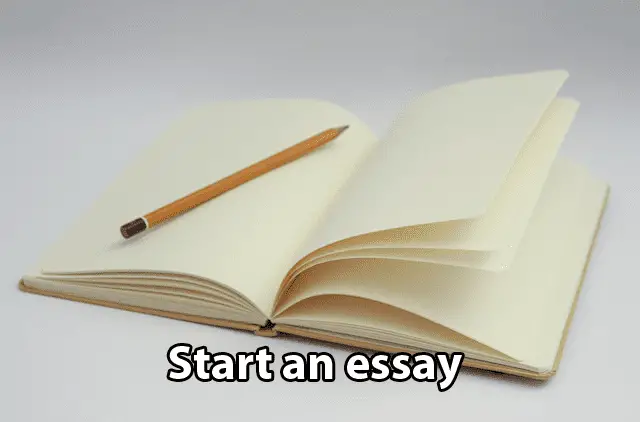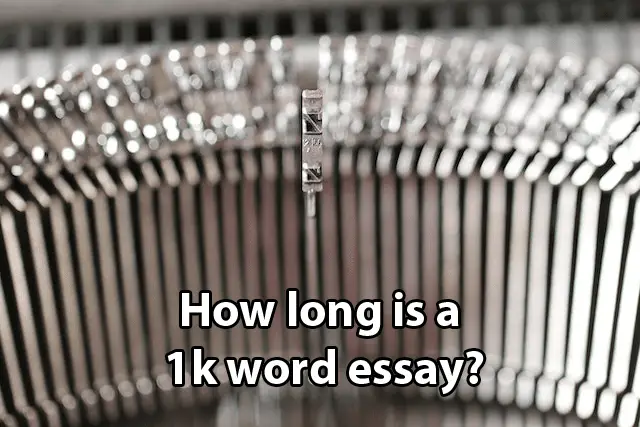
Understanding the essay prompt
Understanding the essay prompt is crucial for writing a successful essay. It involves carefully analyzing and comprehending the requirements and expectations set forth by the prompt. This includes identifying key terms, such as analyze, compare, or evaluate, which provide guidance on how to approach the topic.
Additionally, it is important to consider any specific instructions given in the prompt. These may include word limits, formatting guidelines, or required sources. By fully understanding these instructions, you can ensure that your essay meets all of the necessary criteria.
Furthermore, understanding the essay prompt allows you to develop a focused and coherent thesis statement. The thesis statement serves as a roadmap for your entire essay and should clearly articulate your main argument or point of view. By aligning your thesis with the prompt’s requirements and expectations, you can establish a strong foundation for your essay.
In conclusion,
By thoroughly understanding the essay prompt before beginning your research and writing process,
you will be better equipped to craft an effective response that addresses all aspects of
the assignment. Taking time to analyze key terms,
consider specific instructions,
and develop a clear thesis statement will ultimately result in an organized
and well-structured essay that effectively communicates your ideas.
Remember that mastering this step is essential for success in academic writing.
Conducting thorough research
To effectively conduct thorough research, it is crucial to begin by identifying relevant keywords and search terms. These keywords act as the foundation for your research process, guiding you towards reliable sources of information. By using specific and precise keywords related to your topic, you can narrow down your search results and find more targeted resources. Additionally, utilizing advanced search techniques such as Boolean operators (AND, OR) can help refine your searches further.
Once you have identified the appropriate keywords, it is essential to explore a variety of sources to gather comprehensive information. This includes academic journals, books, reputable websites, and scholarly databases. Evaluating the credibility of these sources is equally important; look for peer-reviewed articles or publications from experts in the field. Taking notes during this stage will aid in organizing your findings later on.
After gathering relevant information from various sources, it is crucial to critically analyze and synthesize the data collected. Look for patterns or connections between different pieces of information that support or challenge existing perspectives on the topic at hand. Properly citing all sources used throughout this process ensures academic integrity while also allowing readers to verify your claims independently.
By following these steps diligently when conducting thorough research without relying on conjunctive adverbs like ‘In conclusion’ or ‘Finally,’ researchers can ensure a well-rounded understanding of their chosen subject matter while maintaining clarity in their writing style.
Developing a clear thesis statement
Developing a clear thesis statement is an essential step in writing an effective essay. A thesis statement serves as the main argument or central idea of your paper, guiding the reader through your analysis and supporting evidence.
To develop a strong thesis statement, it is important to thoroughly understand the essay prompt and identify key keywords or concepts. These keywords provide direction and focus for your research, allowing you to gather relevant information that supports your main argument.
Once you have conducted thorough research, you can begin crafting your thesis statement. This statement should be concise and specific, clearly stating the main point you will be arguing in your essay. By using precise language and avoiding vague terms, you ensure that your thesis provides a clear roadmap for both yourself and the reader.
Structuring your essay effectively around this central thesis is crucial for maintaining coherence throughout. Each paragraph should contribute to developing and supporting your main argument by providing strong evidence from reputable sources. Analyzing and evaluating these sources helps strengthen the credibility of your arguments while also demonstrating critical thinking skills.
In conclusion (without using ‘in conclusion’), developing a clear thesis statement lays the foundation for a well-structured essay that effectively communicates its main ideas to readers. By conducting thorough research, utilizing proper citation techniques, enhancing clarity in writing, editing meticulously, one can create a polished final draft that showcases their analytical abilities while persuading readers of their viewpoint
Structuring your essay effectively
Effective essay structure is crucial for organizing your thoughts and presenting them in a logical manner. Begin by outlining the main points you want to address, ensuring that each paragraph focuses on one specific idea or argument. This will help maintain clarity and coherence throughout your writing.
Start each paragraph with a topic sentence that clearly states the main point you will be discussing. Use keywords such as “firstly,” “next,” or “additionally” to guide readers through your ideas smoothly. Supporting evidence should be provided in the form of examples, facts, or quotes from reputable sources.
To enhance clarity, ensure that each paragraph flows seamlessly into the next by using transitional phrases like “in addition,” “similarly,” or “on the other hand.” These words help connect different ideas and create a cohesive narrative within your essay.
Incorporating proper citation techniques is essential to acknowledge the sources of information used in your essay. Remember to include references whenever you use someone else’s work to support your arguments. This not only strengthens your own credibility but also demonstrates academic integrity.
Lastly, editing and proofreading are vital steps in creating a polished final draft. Carefully review your essay for grammar errors, spelling mistakes, and awkward phrasing. Consider seeking feedback from peers or professors before submitting it for evaluation.
By following these guidelines for structuring an effective essay, you can present a well-organized piece of writing that engages readers and effectively conveys your message.
Crafting a compelling introduction
Introduction plays a crucial role in capturing the reader’s attention and setting the tone for the rest of the essay. It serves as a roadmap, guiding readers through your main points and arguments. To craft a compelling introduction, it is essential to engage your audience from the very beginning.
Start by grabbing their attention with an intriguing hook that relates to your topic. This could be a surprising statistic, an anecdote, or a thought-provoking question. For example, if you are writing about climate change, you might begin with: “Did you know that every year, approximately 8 million metric tons of plastic end up in our oceans?” This immediately captures interest and highlights the significance of your subject matter.
After hooking your readers’ attention, provide some background information on the topic to give them context and establish credibility. Introduce relevant keywords or terms related to your essay’s focus. In our example on climate change, you can mention phrases like greenhouse gases emissions or global warming.
Finally, clearly state your thesis statement at the end of your introduction paragraph. The thesis should succinctly summarize what you will argue or explore throughout your essay while incorporating those previously mentioned keywords. A strong thesis statement sets clear expectations for what follows in subsequent paragraphs.
Remember that crafting a compelling introduction requires creativity and precision in order to captivate readers’ interest right from the start without giving away too much information upfront.
Providing strong supporting evidence
When it comes to providing strong supporting evidence in your essay, it is crucial to gather information from reliable and credible sources. This means conducting thorough research and using keywords relevant to your topic. By utilizing reputable academic journals, books, and scholarly articles, you can ensure that your evidence is accurate and trustworthy. Additionally, incorporating statistics, expert opinions, or real-life examples can further strengthen your arguments.
To enhance the effectiveness of the supporting evidence in your essay, it is important to analyze and evaluate the sources you use. Look for any biases or potential conflicts of interest that may affect the credibility of the information presented. Consider whether the data provided is current and up-to-date or if there have been significant developments since its publication. By critically assessing your sources, you can present a well-rounded argument backed by solid evidence.
Proper citation techniques are essential when including supporting evidence in your essay. Be sure to give credit to the original authors by accurately citing their work within the body of your text as well as in a bibliography or reference list at the end of your paper. This not only demonstrates academic integrity but also allows readers to verify and access the sources themselves if they wish to delve deeper into a particular topic.
Remember that providing strong supporting evidence requires careful consideration of where you obtain information from, how you evaluate its credibility, and how you acknowledge its source through proper citations. By following these guidelines consistently throughout your writing process, you will be able to construct a persuasive argument supported by compelling evidence.
Analyzing and evaluating your sources
When conducting research for your essay, it is crucial to analyze and evaluate the sources you come across. This process involves carefully examining the credibility, relevance, and reliability of each source. Credibility refers to the author’s expertise and reputation in their field, while relevance pertains to how well the information aligns with your topic. Reliability encompasses factors such as accuracy, objectivity, and currency of the source. By critically assessing these aspects, you can ensure that your essay is built on solid foundations.
One effective way to evaluate a source is by considering its purpose or bias. Understanding why an author wrote a particular piece can help you determine if there might be any inherent biases or hidden agendas present in their work. Additionally, examining whether a source presents balanced arguments or only supports one viewpoint can provide insight into its overall quality. It is important to approach all sources with a critical eye and consider multiple perspectives before drawing conclusions.
Another aspect of analyzing and evaluating sources involves cross-referencing information found in different texts or publications. By comparing various sources’ claims and supporting evidence on a given topic, you can identify patterns or inconsistencies that may affect your own argumentation. Furthermore, checking if other reputable scholars cite or reference a specific source adds another layer of validation to its reliability.
Utilizing proper citation techniques
Proper citation techniques are essential in academic writing to give credit to the original sources and avoid plagiarism. When incorporating information from external sources, it is crucial to accurately cite them within your essay. One commonly used citation style is the APA format, which includes the author’s last name and publication year in parentheses after a direct quote or paraphrase (Smith, 2019). Another widely recognized style is MLA, where in-text citations include the author’s name and page number (Smith 45).
In addition to citing within the text, it is equally important to provide a comprehensive list of references at the end of your essay. This reference list should include all sources cited throughout your paper and follow a specific formatting style depending on your discipline or professor’s guidelines.
Using proper citation techniques not only acknowledges other scholars’ work but also enhances the credibility of your own research. It demonstrates that you have conducted thorough research by consulting various sources and strengthens your argument with evidence from experts in the field.
Remember that accurate citations contribute to maintaining academic integrity by giving due credit where it is deserved. Failing to properly cite can lead to accusations of plagiarism, which can have serious consequences for both students and professionals alike.
By following established citation styles consistently throughout your essay, you ensure that readers can easily locate and verify the information you have used while also demonstrating respect for intellectual property rights.
Enhancing clarity and coherence in your writing
To enhance clarity and coherence in your writing, it is crucial to organize your ideas logically. Start by creating an outline that outlines the main points you want to discuss. This will help you stay focused and ensure a smooth flow of information throughout your essay. Additionally, use clear and concise language to convey your thoughts effectively. Avoid using excessive jargon or complex vocabulary that may confuse your readers. Instead, opt for simple yet precise words that accurately express your ideas.
Another way to enhance clarity and coherence in your writing is by using transitional phrases or words between sentences and paragraphs. These transitions help connect different ideas smoothly, allowing readers to follow the logical progression of your arguments effortlessly. Examples of such transitional phrases include “however,” “on the other hand,” “similarly,” and “in contrast.” By incorporating these transitions strategically, you can create a cohesive piece of writing that guides readers from one point to another seamlessly.
In addition to organizing your ideas logically and using appropriate transitions, it is essential to provide sufficient explanations and examples throughout your essay. This helps clarify any complex concepts or arguments you present while also providing evidence for the claims you make. Including relevant examples not only strengthens the credibility of your writing but also allows readers to better understand the topic at hand. Remember to support each idea with reliable sources whenever possible, as this further enhances the clarity and coherence of your work.
Editing and proofreading for a polished final draft
Editing and proofreading are essential steps in the writing process to ensure a polished final draft. These steps involve carefully reviewing your essay for grammar, spelling, punctuation, and clarity errors. By paying attention to these details, you can enhance the overall quality of your writing.
During the editing phase, it is crucial to check for grammatical mistakes such as subject-verb agreement and sentence structure. Additionally, pay close attention to spelling errors and typos that might have been overlooked during the initial drafting process. By thoroughly reviewing your work for these types of errors, you can improve the readability of your essay.
Proofreading involves carefully reading through your essay to identify any areas where clarification or rephrasing may be needed. This step allows you to refine your ideas and ensure that they are effectively communicated to your readers. Furthermore, by checking for coherence in your writing, you can make sure that each paragraph flows smoothly into the next.
In conclusion, editing and proofreading are vital components of producing a polished final draft. By meticulously reviewing your work for grammar mistakes and ensuring clarity throughout your essay’s content, you will present a well-crafted piece of writing that effectively conveys your ideas to readers.

















